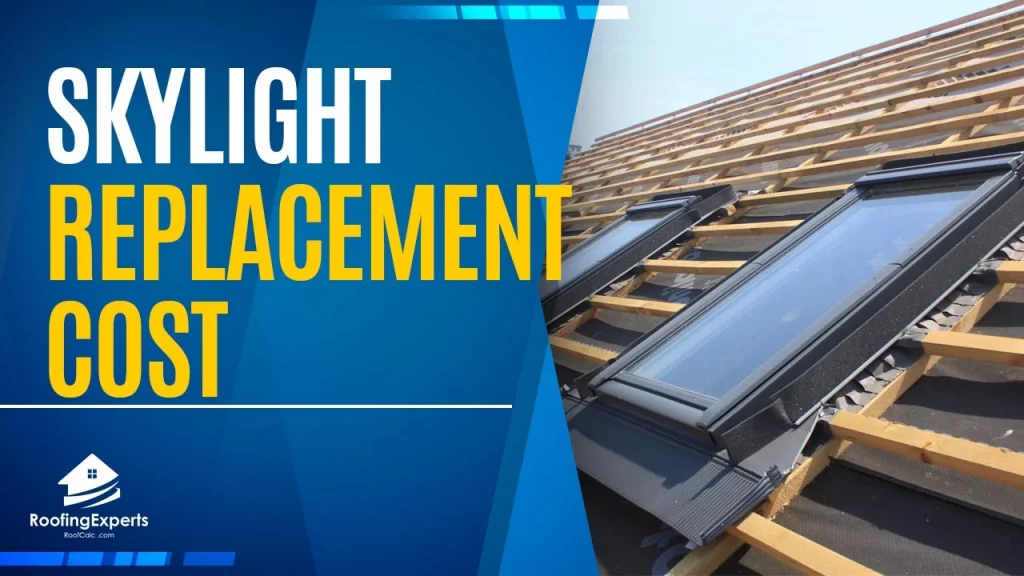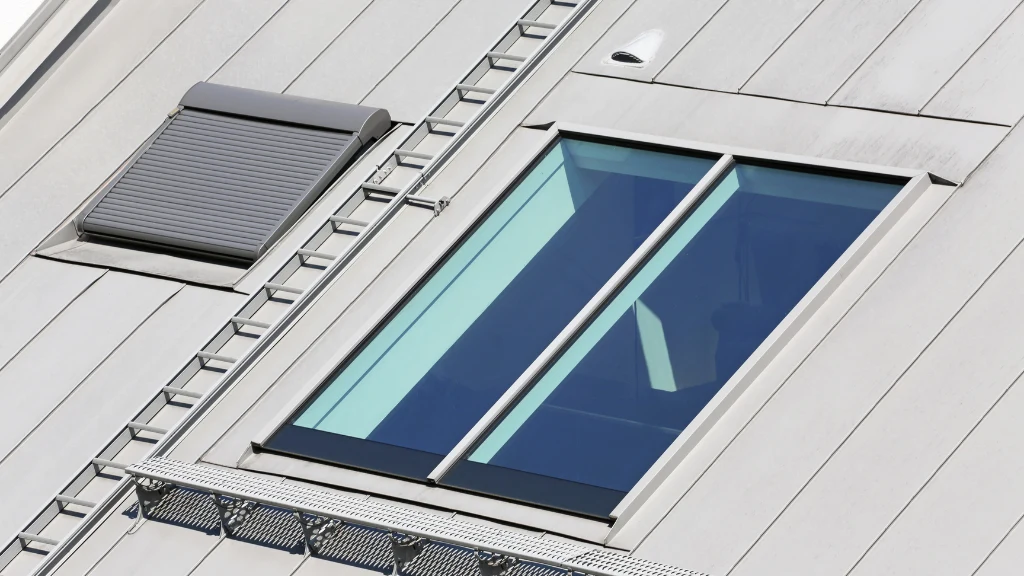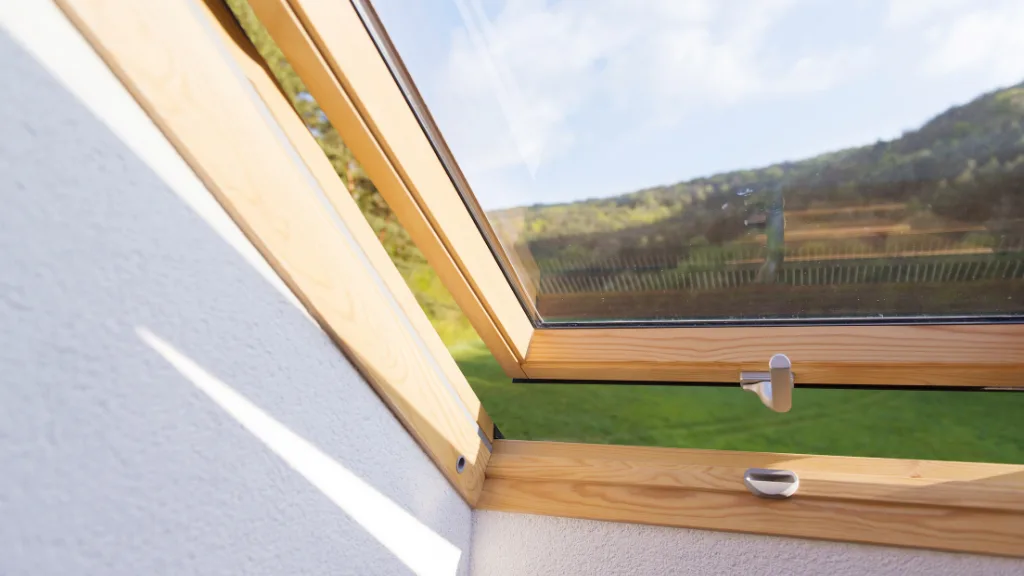
Skylight replacement is one of the most important updates you can make to your home.
I know that when we invest in a new roof for our clients, they’re excited and proud – because it speaks volumes about how much work went into renovating their house!
If you’re looking for a company to replace your skylights, there are a few things that you should know. You want to make sure that the company is licensed and insured, but also has experience in the industry.
Make sure that they have been involved with other projects like yours and can provide testimonials from happy customers.
When Do You Need a Skylight Replacement?
Your skylights won’t last for a lifetime. It’s materials will fail at a certain point in time. You’ll notice this as your skylight reaches around 15 years at least.
Once you reach that span of time, it’s about time to also replace your skylights.
When a skylight is repaired, it’s usually because the glass has been smashed or broken.
Sometimes this can be fixed if there are no structural beams in the way of your new piece of glass and you have the right tools to make everything fit properly again.
In other cases, however, repairing a skylight isn’t possible and it needs to be completely replaced to ensure that it’s secure.
This is especially likely if the skylight has been damaged by a storm or other natural disaster and requires replacement immediately after installation to prevent further damage from occurring.
Skylight replacement is a necessary upgrade that will make an incredible difference to the amount of natural light in your home.
If you’re looking to add more skylights throughout your house, then I highly recommend that you get in touch with a skilled professional who can help you install them quickly and efficiently.
What is a Skylight?
A “skylight” is an opening in a roof that allows daylight to enter. Skylights are almost always used in conjunction with another name, such as skylight window or roof light.
We will generally refer to them all collectively as skylights but be aware that they may have subtle differences depending on which type you choose.
If you’re reading this, then chances are you already know what a skylight is and have probably been searching for a relatively easy way to add one to your home.
This article will provide a good overview of what a skylight is and the options that you have when installing one in your home.
As mentioned above, a skylight is an opening in a roof that allows daylight to enter. Skylights can be fixed or can tilt for easy cleaning.
They are always installed in conjunction with another name such as a skylight window or roof bay light and may also be known as a Solar Tube.
We will generally refer to them all collectively as skylights but be aware that they may have subtle differences depending on which type you choose.
The most common skylight is a clear plastic tube installed vertically through the roof to let natural light in from above.
With this form of skylight, the roofing material must support the additional load imposed by its installation and there are limits as to how thick a roof can be without reinforcing.

Types of Skylights
There are three types of skylights: fixed, manual crank and electric.
Fixed skylights – typically do not open or close; they can be opened to provide ventilation in the spring and summer months but should be closed during the winter to prevent drafts.
Manual-crank shutters – must also remain closed during cold weather otherwise you risk allowing rain inside or exposing your home to the elements.
Electric skylights – are typically installed for people with mobility issues who may have trouble deploying other types of windows and can be opened at any time.
Fixed Skylights
Fixed skylights are a type of window that will not open or close. They may be opened to provide ventilation in the spring and summer months but should be closed during the winter to prevent drafts from entering your home.
Fixed skylights come with several benefits, such as:
Can remain open for up to 30 minutes when temperature fluctuations allow them to
Are not susceptible to damaging debris like wind-blown objects or rain since they are closed when not in use, unlike manual and electric skylights.
Manual Skylights
As the name suggests, a manual skylight must be opened by hand during operation and is often used for ventilation purposes as much as light due to its limited opening time.
Can remain open for up to 30 minutes when temperature fluctuations allow them to
Are not susceptible to damaging debris like wind-blown objects or rain since they are closed when not in use, unlike manual and electric skylights.
Electric Skylights
Electric skylights come with several benefits including: Can be opened at any time without having to worry about rain or debris.
Are not susceptible to damaging debris like wind-blown objects or rain since they are closed when not in use, unlike manual and electric skylights. May be opened at any time of year regardless of temperature fluctuations
Are often used for people with mobility issues who may have trouble deploying other types of skylights and can be opened at any time.
Installation Process – Skylight Replacement
Installing a skylight is not as simple as it sounds and should only be done by experienced professionals who know how to handle the disruption that this installation may cause to your home, such as: Cutting through existing roofing materials in order to install support brackets. Removal of existing roofing materials.
Sealing the support brackets to ensure that there are no leaks between your skylight and the rest of your home’s exterior.
Replacing old insulation around newly installed skylights with new, updated material for thermal comfort as well as safety reasons.
Installing flashing along all edges of the opening in order to seal it against water damage, air leakage and thermal transfer.
Installing your skylight is a process that must be done carefully in order to prevent future problems such as: Leaks due to poor installation of the flashing around the edges of openings which can cause both insulation and structural damage if not properly sealed during installation.
Thermal discomfort caused by air leakage between the skylight and your home’s exterior which can lead to condensation due to excessive heat loss.
What To Look For When Installing Your New Skylight?
Now that we’ve gone over what a skylight is exactly, let’s talk about the most important thing: finding a professional to install your new skylight.
When searching for an installer, make sure that they are licensed and insured but also have experience in the industry.
Make sure that they have been involved with other projects like yours and can provide testimonials from happy customers who found their work to be of high quality.
In addition to this, make sure that they have a good reputation in your community. If you’re not from the immediate area then see if there are any online reviews or seek out recommendations from friends and family members who live nearby.
This will ensure that when it comes time for installation day, everything runs smoothly and you don’t need to worry about a thing.
Benefits of Replacing Your Skylight
Skylight replacement offers a number of benefits that you’re sure to love.
- Not only will it allow more natural light into your home during the day but can also cut down on heating costs in colder months, helping lower your monthly energy bills.
- Skylights are great at letting heat escape when needed which is why they make for an ideal addition in warmer months.
- They can also be opened to provide ventilation during the spring and summer months but should remain closed when it’s colder outside in order to prevent drafts or other air-leakages from entering your home.
- Skylights are a great way of modernizing and improving the look and feel of any room while boosting its value at the same time!
If you are considering replacing an existing skylight with a new one, it is important that you hire experienced professionals who know what they are doing in order to prevent issues such as those listed above from occurring after installation, otherwise you may find yourself with a new skylight and no solution for the problems you had before its installation.
When you hire a contractor, make sure that they measure each opening before installing new windows so that they don’t forget or miss anything!
And finally, remember that your home’s skylights will need to be cleaned and maintained on a regular basis.


